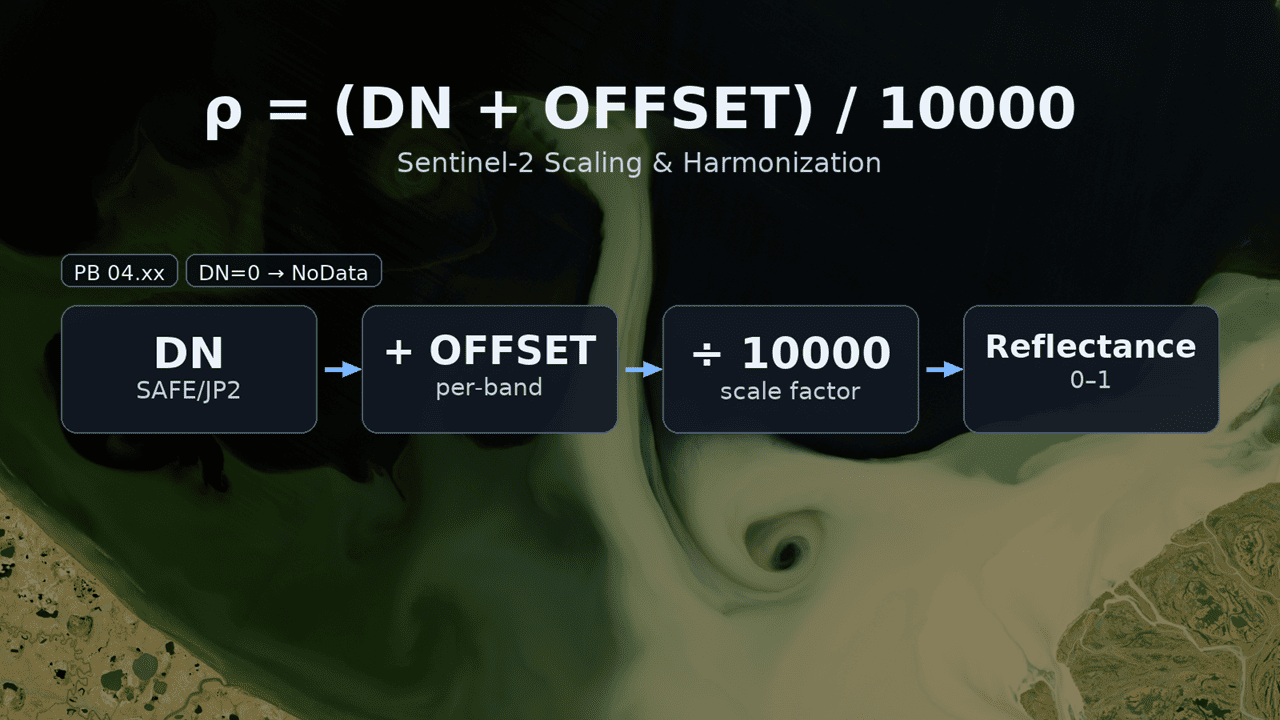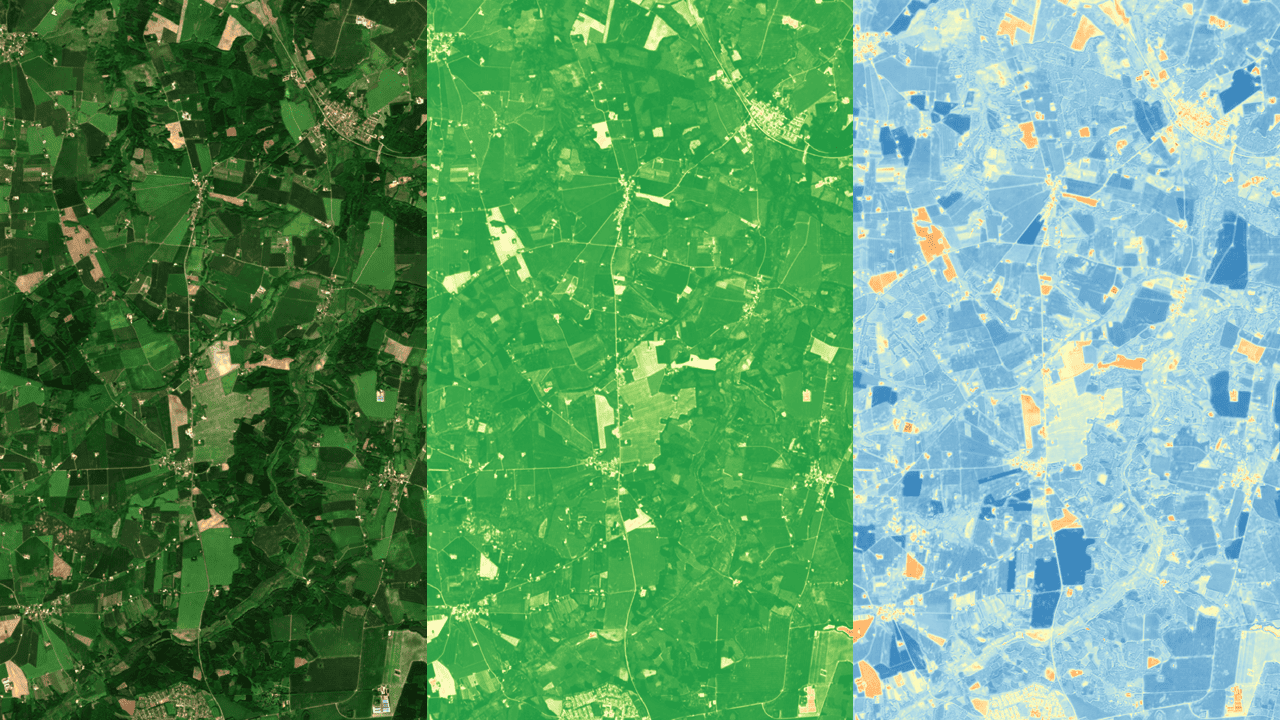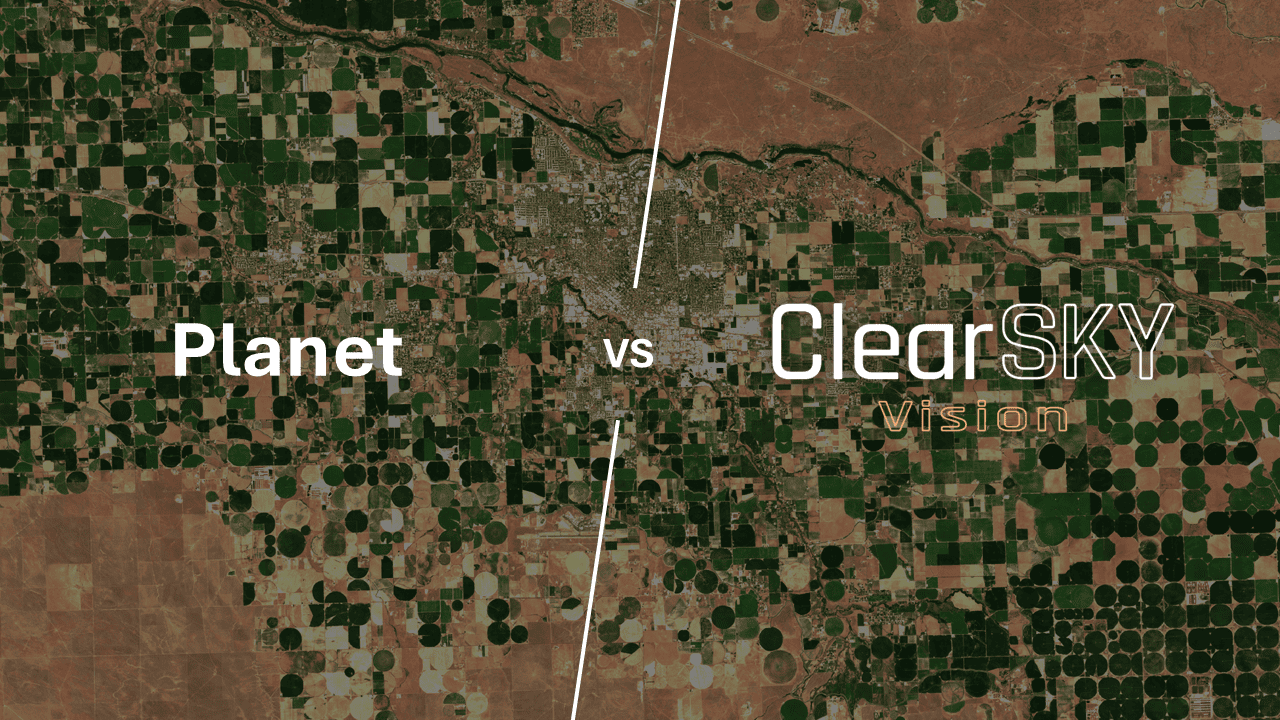EPSG and UTM for Satellite Imagery: Choosing the Right CRS
2025-08-20 · 5 min read · EPSG · UTM · MGRS · Sentinel-2 · Projections · Web Mercator · ETRS89 · Area calculation · Zonal statistics

TL;DR: Sentinel-2 tiles are delivered in UTM on WGS 84. For accurate areas, distances, and parcel stats, work in the tile’s native UTM EPSG. You can reproject to other EPSGs, but align pixels and resampling carefully and avoid multiple hops.
Why CRS and EPSG exist
Maps are flat. Earth is not. A Coordinate Reference System defines how we represent locations from a curved Earth on a flat plane. It specifies a datum (the Earth model) and, for projected systems, a projection (the math from latitude and longitude to x and y in meters). EPSG codes are the identifiers for these systems, for example EPSG:4326 for WGS 84 geographic in degrees, or EPSG:32632 for WGS 84 / UTM zone 32 North in meters.
Degrees are convenient for global coverage and quick looks. Degrees are not uniform in length, so area and distance in degrees are unreliable. For measurements and raster math, switch to a projected CRS in meters.
Why Sentinel-2 uses UTM tiles
Sentinel-2 Level-1C and Level-2A products are delivered as fixed 100 km by 100 km tiles in UTM on WGS 84. UTM splits the globe into 60 zones, each 6 degrees wide, with coordinates in meters. Keeping each tile inside a single zone keeps scale distortion low and pixels square in meters, which is ideal for parcel analytics and repeatable raster operations.
Tiles follow an MGRS-based layout so each tile sits cleanly in one projected CRS. A side effect is that neighboring tiles can live in different UTM zones. When you mosaic across boundaries, choose your target CRS deliberately and reproject only once.
Quick decoder for UTM EPSG codes
EPSG:326ZZ means WGS 84 / UTM zone ZZ in the Northern Hemisphere.
EPSG:327ZZ means WGS 84 / UTM zone ZZ in the Southern Hemisphere.
So EPSG:32632 is UTM 32N and EPSG:32719 is UTM 19S.
A common longhand rule for zone number is floor((lon + 180) / 6) + 1, but UTM has special adjustments in parts of Norway and Svalbard, so trust the tile’s reported zone over a hand calculation.
Picking the right CRS for your job
For any work that depends on area, distance, or rate of change, measure in meters. For Sentinel-2 derived rasters, staying in the tile’s native UTM EPSG avoids unnecessary resampling and off-by-a-pixel shifts in time-series.
If your area of interest spans multiple UTM zones, there are two safe patterns. Analyze per-tile in each native UTM and merge results in your tables. Or pick a single projected CRS for the whole study region and reproject once. For national scale projects, a country’s official projection can be a good choice. For pan-European aggregation, ETRS89 based projections are often preferred for reporting, while processing still runs in native UTM.
A quick word on Web Mercator. EPSG:3857 is great for slippy maps. It distorts area, especially toward high latitudes. Use it for visualization, not for measurements.
Reprojecting rasters without regrets
Reprojection always resamples. Choose a method that matches the data type. Reflectance and indices are continuous, so use bilinear or cubic. Labels and classes are categorical, so use nearest neighbor. Set and preserve NoData correctly to avoid bleeding values across edges.
Make pixel alignment explicit. Fix the target origin, resolution, and grid so that all dates land on exactly the same pixels. Do not reproject the same raster more than once in a pipeline. When possible, bring vectors to the raster CRS for zonal statistics rather than the other way around.
A note on datums
Sentinel-2 uses WGS 84. Many European vector datasets use ETRS89, which is a stable frame for Europe. They are close but not identical. For precise overlays and reporting, apply the correct transformation in your GIS rather than assuming they are interchangeable.
How ClearSKY handles CRS at download time
By default, downloads come in the tile’s native UTM (WGS 84) so your pixels are in meters and aligned with Sentinel-2 conventions. If your workflow needs something else, set Epsgprojection to any EPSG, for example 4326, 3857, or a specific UTM like 32632.
When you choose a UTM EPSG (the WGS 84 UTM families EPSG:32601–32660 for the Northern Hemisphere and EPSG:32701–32760 for the Southern Hemisphere), two controls tailor how pixels are selected and reprojected near zone boundaries.
UtmDataSelectionMode
single_utm_fully_covered uses only pixels that are native to the requested UTM zone and requires that the area of interest is fully covered by that zone.
combined_utm prefers pixels native to the requested zone and fills gaps with pixels reprojected from neighboring zones so the output remains continuous.
single_utm uses only native pixels and crops the output to actual native coverage.
UtmGridForcePixelResolutionSize (true or false) controls how reprojection error appears when multiple zones contribute.
With true, the pixel size is forced to the requested resolution, for example exactly 10 m, and small geometric warps absorb the error.
With false, the grid stays more rigid and pixel size may vary slightly, for example 9.99 m, trading tiny size drift for less twisting.
Need to confirm which tile or zone a request hits. See our tile list and examples:
ClearSKY tiles: https://docs.clearsky.vision/docs/order-guide/tile-ordering
Practical tip
For parcel stats and time-series, stay in the tile’s native UTM EPSG. If you must reproject, do it once, choose the resampler that fits your data, set NoData, and align pixels so every date lands on the same grid.
Practical takeaways
Work in projected meters for measurement. Prefer the native UTM EPSG for Sentinel-2 rasters. Choose a single target CRS for multi-zone studies and reproject once. Keep pixel alignment fixed across dates. Reserve EPSG:4326 and Web Mercator for browse maps and UI.


